Showing Spotlights 361 - 368 of 546 in category All (newest first):
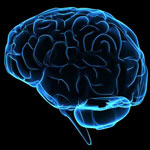 If you think that building an artificial human brain is science fiction, you are probably right - for now. But don't think for a moment that researchers are not working hard on laying the foundations for what is called neuromorphic engineering - a new interdisciplinary discipline that includes nanotechnologies and whose goal is to design artificial neural systems with physical architectures similar to biological nervous systems. One of the key components of any neuromorphic effort is the design of artificial synapses. The human brain contains vastly more synapses than neurons - by a factor of about 10,000 - and therefore it is necessary to develop a nanoscale, low power, synapse-like device if scientists want to scale neuromorphic circuits towards the human brain level. New research now suggests that memristor devices are capable to emulate the biological synapses with properly designed CMOS neuron components.
If you think that building an artificial human brain is science fiction, you are probably right - for now. But don't think for a moment that researchers are not working hard on laying the foundations for what is called neuromorphic engineering - a new interdisciplinary discipline that includes nanotechnologies and whose goal is to design artificial neural systems with physical architectures similar to biological nervous systems. One of the key components of any neuromorphic effort is the design of artificial synapses. The human brain contains vastly more synapses than neurons - by a factor of about 10,000 - and therefore it is necessary to develop a nanoscale, low power, synapse-like device if scientists want to scale neuromorphic circuits towards the human brain level. New research now suggests that memristor devices are capable to emulate the biological synapses with properly designed CMOS neuron components.
Apr 23rd, 2010
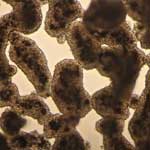 Mass culture of cell lines has long been fundamental to the manufacture of viral vaccines and many products of biotechnology. More recently it also has become an essential tool in stem cell research and tissue engineering. Most conventional petri dish based cell culture techniques produce monolayers cell growth that is missing essential cellular functions that are present in living organisms; gene expression, signaling and morphology can be different and this compromises its clinical relevance. It limits their potential to predict the cellular responses of real organisms. In order to develop cellular models that mimic the functions of living tissues, researchers have therefore been trying to move from two-dimensional to three-dimensional cultures. A recent example is a technique that uses magnetic levitation of cells in the presence of a hydrogel consisting of gold, magnetic iron oxide nanoparticles and filamentous bacteriophage. By spatially controlling the magnetic field while cells divide and grow, the geometry of the cell mass can be manipulated, and multicellular clustering of different cell types in co-culture can be achieved.
Mass culture of cell lines has long been fundamental to the manufacture of viral vaccines and many products of biotechnology. More recently it also has become an essential tool in stem cell research and tissue engineering. Most conventional petri dish based cell culture techniques produce monolayers cell growth that is missing essential cellular functions that are present in living organisms; gene expression, signaling and morphology can be different and this compromises its clinical relevance. It limits their potential to predict the cellular responses of real organisms. In order to develop cellular models that mimic the functions of living tissues, researchers have therefore been trying to move from two-dimensional to three-dimensional cultures. A recent example is a technique that uses magnetic levitation of cells in the presence of a hydrogel consisting of gold, magnetic iron oxide nanoparticles and filamentous bacteriophage. By spatially controlling the magnetic field while cells divide and grow, the geometry of the cell mass can be manipulated, and multicellular clustering of different cell types in co-culture can be achieved.
Mar 31st, 2010
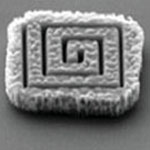 Continuing miniaturization has moved the semiconductor industry well into the nano realm with leading chip manufacturers on their way to CMOS using 22nm process technology. With transistors the size of tens of nanometers, researchers have begun to explore the interface of biology and electronics by integrating nanoelectronic components and living cells. While researchers have already experimented with integrating living cells into semiconductor materials other research is exploring the opposite way, i.e. integrating nanoelectronics into living cells. Researchers in Spain have demonstrated that silicon chips smaller than cells can be produced, collected, and internalized inside living cells by different techniques (lipofection, phagocytosis or microinjection) and, most significantly, they can be used as intracellular sensors.
Continuing miniaturization has moved the semiconductor industry well into the nano realm with leading chip manufacturers on their way to CMOS using 22nm process technology. With transistors the size of tens of nanometers, researchers have begun to explore the interface of biology and electronics by integrating nanoelectronic components and living cells. While researchers have already experimented with integrating living cells into semiconductor materials other research is exploring the opposite way, i.e. integrating nanoelectronics into living cells. Researchers in Spain have demonstrated that silicon chips smaller than cells can be produced, collected, and internalized inside living cells by different techniques (lipofection, phagocytosis or microinjection) and, most significantly, they can be used as intracellular sensors.
Mar 15th, 2010
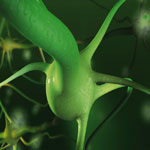 Nanobiotechnology is essentially different in many aspects from other areas of nanotechnology such as nanoelectronics or nanomaterials. It is certainly the most complex sub-area of nanotechnology. Last month, EuroNanoBio - a Support Action funded under the 7th Framework Programme of the European Union - has issued its report on a conceptual framework and a tool box to structure the European capacity in nanobiotechnology. The EuroNanoBio partners explored the definition, establishment and further development of a European scale infrastructure on nanobiotechnology and the associated realistic implementation plan. It aimed at defining not only the key features of a potential European infrastructure in nanobiotechnology, but it has also established the way it should be designed.
Nanobiotechnology is essentially different in many aspects from other areas of nanotechnology such as nanoelectronics or nanomaterials. It is certainly the most complex sub-area of nanotechnology. Last month, EuroNanoBio - a Support Action funded under the 7th Framework Programme of the European Union - has issued its report on a conceptual framework and a tool box to structure the European capacity in nanobiotechnology. The EuroNanoBio partners explored the definition, establishment and further development of a European scale infrastructure on nanobiotechnology and the associated realistic implementation plan. It aimed at defining not only the key features of a potential European infrastructure in nanobiotechnology, but it has also established the way it should be designed.
Feb 19th, 2010
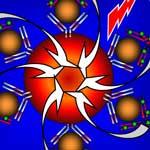 In many diagnostic processes, the detection of several protein markers is required. Rather than performing several sequential analysis steps, a multiplexed approach allows the simultaneous measurement of multiple biomarkers from the same blood sample. The convergence of nanotechnology, microtechnology, microfluidics, photonics, signal processing, and proteomics allows for the development of increasingly sophisticated and effective multiplexed point-of-care diagnostic devices. The detection of protein biomarkers can done with an optical multiplexing approach that uses dye particles of different colors. In contrast to conventional fluorescence dyes, quantum dots generate a much more powerful fluorescent signal which provides a large increase in sensitivity compared to other methods. Quantum dots are also available in multiple colors, allowing the investigators to tag each antibody with a uniquely colored quantum dot. Researchers have now demonstrated a novel and fast quantum dot-based FRET technique that is suitable for multiplexed ultrasensitive detection.
In many diagnostic processes, the detection of several protein markers is required. Rather than performing several sequential analysis steps, a multiplexed approach allows the simultaneous measurement of multiple biomarkers from the same blood sample. The convergence of nanotechnology, microtechnology, microfluidics, photonics, signal processing, and proteomics allows for the development of increasingly sophisticated and effective multiplexed point-of-care diagnostic devices. The detection of protein biomarkers can done with an optical multiplexing approach that uses dye particles of different colors. In contrast to conventional fluorescence dyes, quantum dots generate a much more powerful fluorescent signal which provides a large increase in sensitivity compared to other methods. Quantum dots are also available in multiple colors, allowing the investigators to tag each antibody with a uniquely colored quantum dot. Researchers have now demonstrated a novel and fast quantum dot-based FRET technique that is suitable for multiplexed ultrasensitive detection.
Feb 17th, 2010
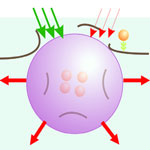 Multifunctional nanoparticles are at the core of a growing field called theranostics that develops technologies physicians can use to diagnose and treat diseases in a single procedure. The major promise of theranostics is to bring together key stages of a medical treatment, such as the diagnosis and therapy, and thus to make a treatment shorter, safer and more efficient. Theranostic approaches require adequate tools with a high multi-functionality and selectivity. The initial phase of the development of theranostics has already revealed the two general challenges: lack of multifunctional methods and agents, and the lack of selectivity and specificity of available agents - that ultimately requires cell and molecular levels. Researchers have now developed a novel method based on gold nanoparticle-generated transient photothermal vapor nanobubbles, a structure they refer to as plasmonic nanobubbles.
Multifunctional nanoparticles are at the core of a growing field called theranostics that develops technologies physicians can use to diagnose and treat diseases in a single procedure. The major promise of theranostics is to bring together key stages of a medical treatment, such as the diagnosis and therapy, and thus to make a treatment shorter, safer and more efficient. Theranostic approaches require adequate tools with a high multi-functionality and selectivity. The initial phase of the development of theranostics has already revealed the two general challenges: lack of multifunctional methods and agents, and the lack of selectivity and specificity of available agents - that ultimately requires cell and molecular levels. Researchers have now developed a novel method based on gold nanoparticle-generated transient photothermal vapor nanobubbles, a structure they refer to as plasmonic nanobubbles.
Feb 1st, 2010
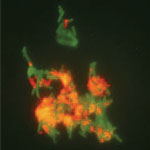 About two years ago we reported on the concept of a biological nanofactory that comprises multiple functional modules: a targeting module specifically targets cells; a sensing module senses and transports raw materials that are present in their vicinity; a biosynthesis module converts raw materials to useful molecules, transport them back to the cell surface, and self-destructs upon completion of this sequence (self-destruct module).
Scientists at the University of Maryland have now demonstrated what was conceptualized in this earlier vision. Moreover they have added a quality that was not originally conceived - the nanofactory needs to have modalities that enable its own assembly. The scientists used the principles of synthetic biology to create the enzyme pathway that has as a part of it an assembly domain. Then, they used 'biofabrication' to assemble antibodies on to the synthesis domain, which enables targeting.
About two years ago we reported on the concept of a biological nanofactory that comprises multiple functional modules: a targeting module specifically targets cells; a sensing module senses and transports raw materials that are present in their vicinity; a biosynthesis module converts raw materials to useful molecules, transport them back to the cell surface, and self-destructs upon completion of this sequence (self-destruct module).
Scientists at the University of Maryland have now demonstrated what was conceptualized in this earlier vision. Moreover they have added a quality that was not originally conceived - the nanofactory needs to have modalities that enable its own assembly. The scientists used the principles of synthetic biology to create the enzyme pathway that has as a part of it an assembly domain. Then, they used 'biofabrication' to assemble antibodies on to the synthesis domain, which enables targeting.
Jan 29th, 2010
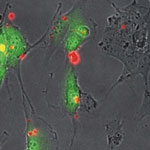 Oncogenes are genes that are associated with the development of cancer - when mutated or expressed at high levels, they can help turn a normal cell into a tumor cell. Promising new chemotherapeutic strategies have therefore focused on suppressing oncogenes. One such approach is based on RNA interference (RNAi), a technique wherein small double-stranded RNA molecules can sequence-specifically inhibit the expression of targeted oncogenes. The idea here is that with the help of small interfering RNA (siRNA), key oncogenes that modulate signaling pathways and thereby regulate the behavior of malignant tumor cells can be manipulated. To harness the full potential of this approach, the prime requirements are to deliver the siRNA molecules with high selectivity and efficiency into tumor cells and to monitor both siRNA delivery and the resulting knockdown effects at the single-cell level.
Oncogenes are genes that are associated with the development of cancer - when mutated or expressed at high levels, they can help turn a normal cell into a tumor cell. Promising new chemotherapeutic strategies have therefore focused on suppressing oncogenes. One such approach is based on RNA interference (RNAi), a technique wherein small double-stranded RNA molecules can sequence-specifically inhibit the expression of targeted oncogenes. The idea here is that with the help of small interfering RNA (siRNA), key oncogenes that modulate signaling pathways and thereby regulate the behavior of malignant tumor cells can be manipulated. To harness the full potential of this approach, the prime requirements are to deliver the siRNA molecules with high selectivity and efficiency into tumor cells and to monitor both siRNA delivery and the resulting knockdown effects at the single-cell level.
Jan 19th, 2010
 If you think that building an artificial human brain is science fiction, you are probably right - for now. But don't think for a moment that researchers are not working hard on laying the foundations for what is called neuromorphic engineering - a new interdisciplinary discipline that includes nanotechnologies and whose goal is to design artificial neural systems with physical architectures similar to biological nervous systems. One of the key components of any neuromorphic effort is the design of artificial synapses. The human brain contains vastly more synapses than neurons - by a factor of about 10,000 - and therefore it is necessary to develop a nanoscale, low power, synapse-like device if scientists want to scale neuromorphic circuits towards the human brain level. New research now suggests that memristor devices are capable to emulate the biological synapses with properly designed CMOS neuron components.
If you think that building an artificial human brain is science fiction, you are probably right - for now. But don't think for a moment that researchers are not working hard on laying the foundations for what is called neuromorphic engineering - a new interdisciplinary discipline that includes nanotechnologies and whose goal is to design artificial neural systems with physical architectures similar to biological nervous systems. One of the key components of any neuromorphic effort is the design of artificial synapses. The human brain contains vastly more synapses than neurons - by a factor of about 10,000 - and therefore it is necessary to develop a nanoscale, low power, synapse-like device if scientists want to scale neuromorphic circuits towards the human brain level. New research now suggests that memristor devices are capable to emulate the biological synapses with properly designed CMOS neuron components.
 Subscribe to our Nanotechnology Spotlight feed
Subscribe to our Nanotechnology Spotlight feed





